#voyage of the moons
Explore tagged Tumblr posts
Text
voyage of the moons
#space#io#europa#jupiter#voyage of the moons#nasa#cassini space probe#great red spot#video credit: kevin m. gill
379 notes
·
View notes
Text





I love our future god-queen.
#sera myu#un nouveau voyage#sailor moon#sailor moon musical#gif#rei hino#minako aino#makoto kino#ami mizuno#usagi tsukino#mugen academy#sea of serenity subs
856 notes
·
View notes
Text
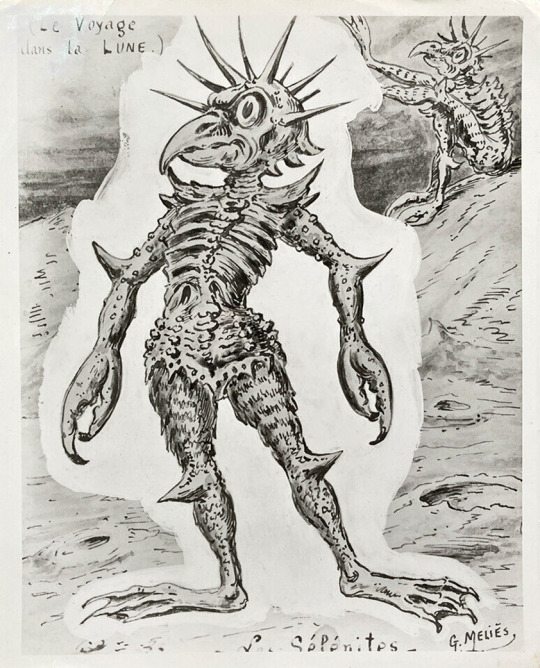
Georges Méliès' concept art for Le voyage dans la lune, 1902
#georges méliès#concept art#art#le voyage dans la lune#a trip to the moon#1900s movies#1902#sci fi#fantasy#comedy#short film#silent film
795 notes
·
View notes
Text
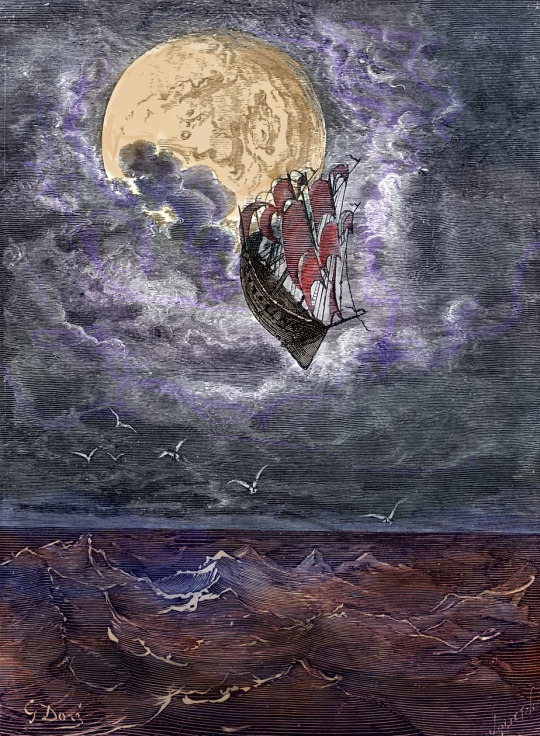
A Voyage to the Moon (The Adventures of Baron Munchausen) by Gustave Doré
#gustave doré#art#baron munchausen#voyage#moon#the adventures of baron munchausen#german#nobleman#germany#journey#travels#travelling#sky#sea#boat#ship#flying#full moon#clouds#baron münchhausen#hanoverian#hanover#campaigns#rudolf erich raspe#europe#european#storyteller#adventure#aristocratic#aristocrat
606 notes
·
View notes
Text

#phoebe bridgers#boygenius#moon song#punisher#stranger in the alps#i know the end#voyager#revolution 0#savior complex#graceland too#halloween#the gold#that funny feeling#the record#letter to an old poet#emily im sorry#cool about it
243 notes
·
View notes
Text

“La rêverie est le clair de lune de la pensée.” Jules Renard
#art#lune#moon#paysage#landscape#nature#photography#naturephotography#landscapephotography#photo#travel#naturelovers#photooftheday#voyage#montagne#sunset#photographie#picoftheday#on#focus#vacances#soleil#paysagemagnifique#randonn#mountains#mer#photographer#sky#travelphotography
172 notes
·
View notes
Text

"A specal color reconstruction of the eruption of the volcano Loki pn the Iovian satellite Io. The picture was taken by the Voyager I from a range of about half a million kilometers." March 5, 1979.
Voyage to Jupiter. 1980. Scientific and Technical Information Branch NASA.
#nasa#space exploration#jupiter#io#volcano#moon#space photography#astronomy#nemfrog#1979#1980#1970s#voyager 1
505 notes
·
View notes
Text
First image of the earth and the moon in a single frame, Voyager 1
93 notes
·
View notes
Text




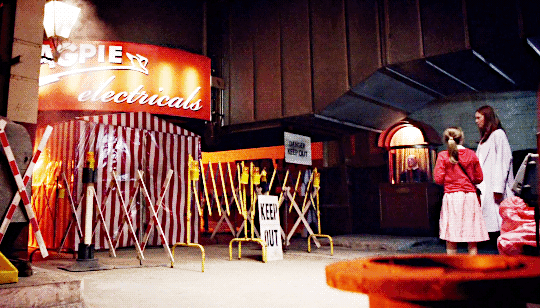
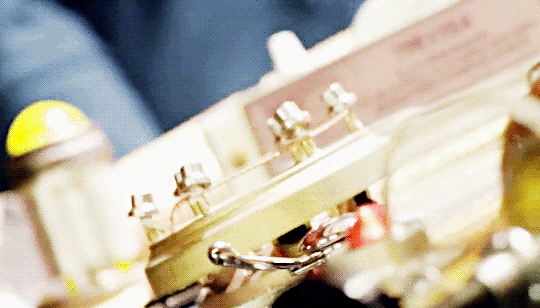
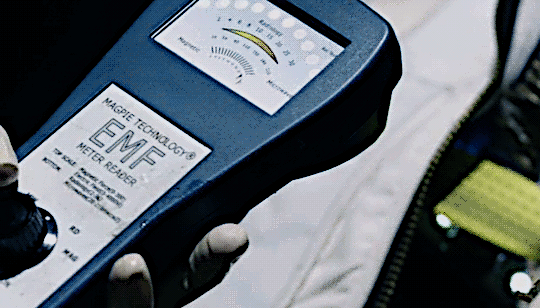
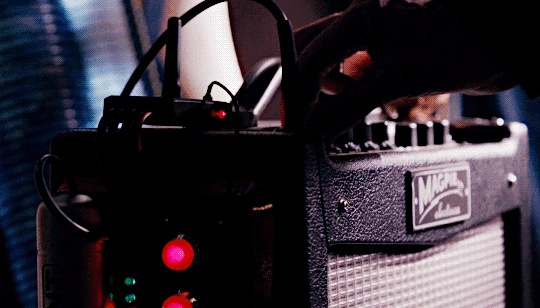
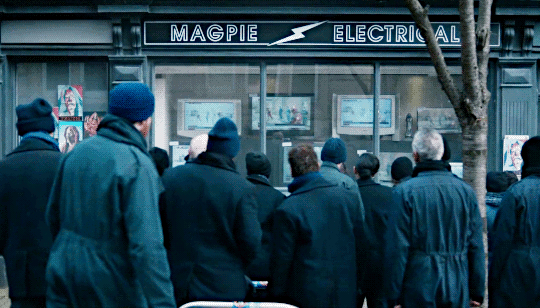
#dwedit#doctorwhoedit#doctor who#modern who#my gif#**#*dw#the idiot's lantern#the sound of drums#voyage of the damned#the beast below#vincent and the doctor#day of the moon#before the flood#the lie of the land#parallelmw#compilation
297 notes
·
View notes
Text
The Earth As Seen From
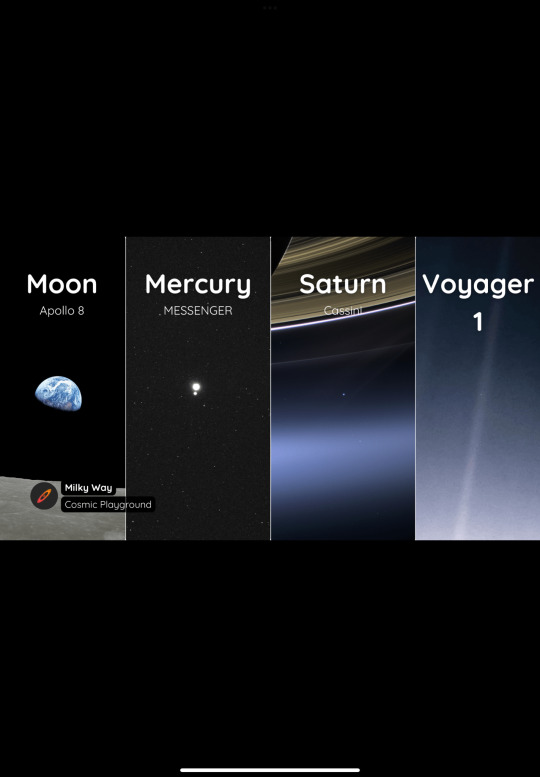
#moon#planet mercury#planet saturn#voyager 1#cassini huygens#messenger spacecraft#apollo 8#astronomy#nasa#astronomers#universe#astrophotography#nasa photos#astrophysics#outer space#nasawebb#hubble space telescope#i love astronomy#astronomy facts#astrography#astrobiology#astronauts#astronaut#astro community#astro notes#astro observations#astroblr#astro boy#planetary science#planetary nebula
289 notes
·
View notes
Text


I love how gacha games depicted the spacecraft voyager as starchildren full of wonders and curiosities. With the difference that r1999 voyager inspired from the golden record whereas fgo voyager inspired from le petit prince. Also fun fact NASA launch two Voyagers to space
#fgo#type moon#reverse 1999#r1999#fgo voyager#r1999 voyager#voyager 1#voyager 2#re1999#fate grand order#fate requiem#fate requiem voyager#fate series#fate voyager#blue epoch#they are twins#and for some reason they are cosmic horror to aliens
410 notes
·
View notes
Text
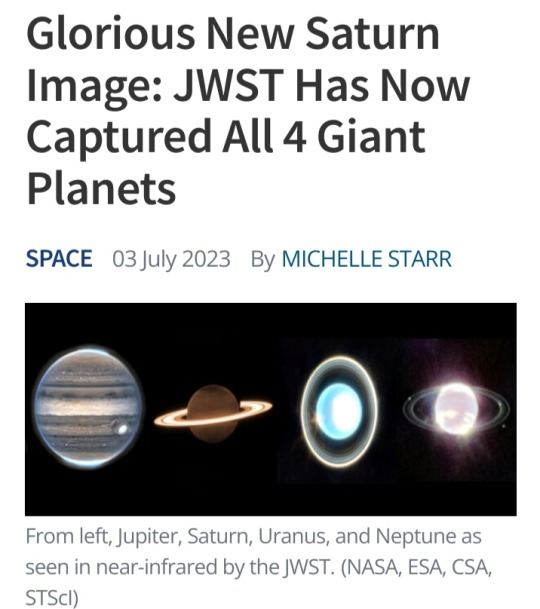
With the addition of Saturn, the James Webb Space Telescope has finally captured all four of our Solar System's giant worlds.
JWST's observations of the ringed planet, taken on 25 June 2023, have been cleaned up and processed, giving us a spectacular view of Saturn's glorious rings, shining golden in the darkness.
By contrast, the disk of Saturn is quite dark in the new image, lacking its characteristic bands of cloud, appearing a relatively featureless dim brown.
This is because of the wavelengths in which JWST sees the Universe – near- and mid-infrared.
These wavelengths of light are usually invisible to the naked human eye, but they can reveal a lot.
For example, thermal emission – associated with heat – is dominated by infrared wavelengths.
When you're trying to learn about what's going on inside a planet wrapped in thick, opaque clouds, studying its temperature is a valuable way to go about it.
Some elements and chemical processes emit infrared light, too. Seeing the planets of the Solar System in wavelengths outside the narrow range admitted by our vision can tell us a lot more about what they have going on.
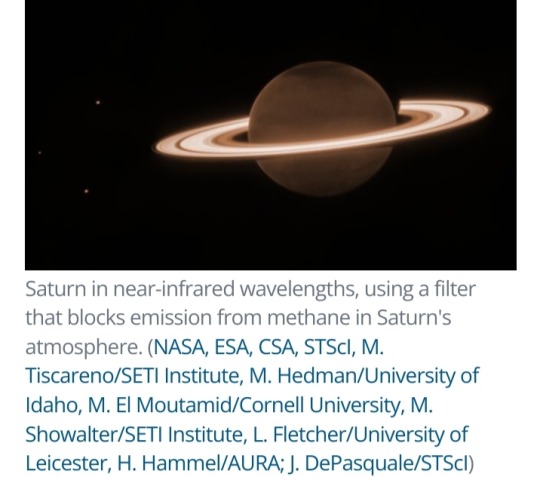
Saturn
As we saw last week, when we clapped eyes on the raw JWST Saturn images, the observations involved filters that dimmed the light of the planet, while allowing light from the rings and moons to shine brightly.
This is so a team led by planetary scientist Leigh Fletcher of the University of Leicester in the UK can study the rings and moons of Saturn in more detail.
They hope to identify new ring structures and, potentially, even new moons orbiting the gas giant.
The image above shows three of Saturn's moons, Dione, Enceladus and Tethys, to the left of the planet.
Although dim, the disk of the planet also reveals information about Saturn's seasonal changes.
The northern hemisphere is reaching the end of its 7-year summer, but the polar region is dark. An unknown aerosol process could be responsible.
Meanwhile, the atmosphere around the edges of the disk appears bright, which could be the result of methane fluorescence, or the glow of trihydrogen, or both. Further analysis could tell us which.
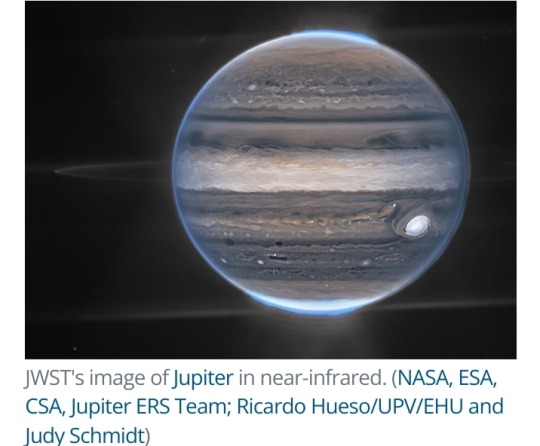
Jupiter
Jupiter was the first of the giant planets to get the JWST treatment, with images dropping in August of last year – and boy howdy were they stunning.
The spectacular detail seen in the planet's turbulent clouds and storms was perhaps not entirely surprising.
However, we also got treated to some rarely seen features: the permanent aurorae that shimmer at Jupiter's poles, invisible in optical wavelengths, and Jupiter's tenuous rings.
We also saw two of the planet's smaller, lesser-known moons, Amalthea and Adrastea, with fuzzy blobs of distant galaxies in the background.
"This one image sums up the science of our Jupiter system program, which studies the dynamics and chemistry of Jupiter itself, its rings, and its satellite system," said astronomer Thierry Fouchet of Paris Observatory in France, who co-led the observations.
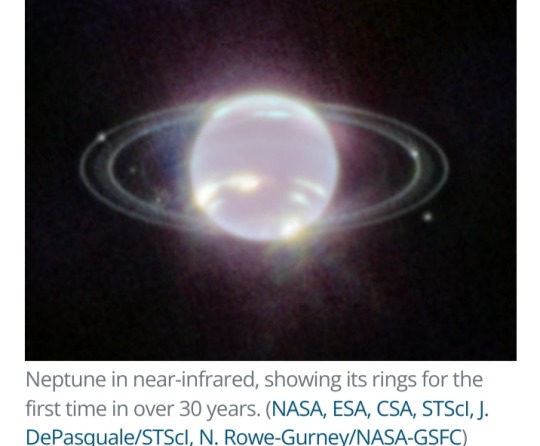
Neptune
Observations of Neptune arrived in the latter half of September 2022.
Because Neptune is so very far away, it tends to get a little neglected; you're probably used to seeing, if anything, the images taken by Voyager 2 when it flew past in 1989.
JWST's observations gave us, for the first time in more than 30 years, a new look at the ice giant's dainty rings – and the first ever in infrared.
It also revealed seven of Neptune's 14 known moons, and bright spots in its atmosphere.
Most of those are storm activity, but if you look closely, you'll see a bright band circling the planet's equator.
This had never been seen before and could be, scientists say, a signature of Neptune's global atmospheric circulation.
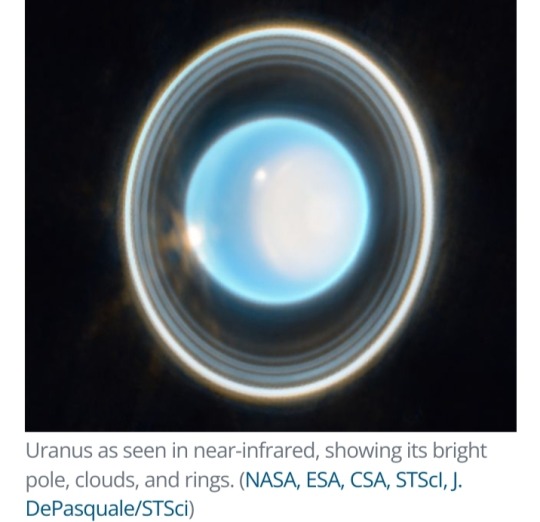
Uranus
Uranus is also pretty far away, but it's also a huge weirdo. Although very similar to Neptune, the two planets are slightly different hues, which is something of a mystery.
Uranus is also tipped sideways, which is challenging to explain too.
JWST's observations, released in April 2023, aren't solving these conundrums.
However, they have revealed 11 of the 13 structures of the incredible Uranian ring system and an unexplained atmospheric brightening over the planet's polar cap.
JWST has a lot to say about the early Universe; but it's opening up space science close to home, too.
As its first year of operations comes to an end, we can't help but speculate what new wonders will be to come in the years ahead.
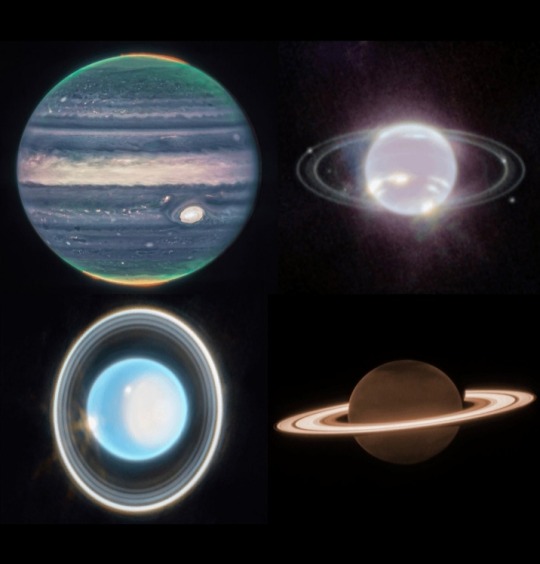
Top: Jupiter - Neptune / Bottom: Uranus - Saturn
Credit: NASA
#James Webb Space Telescope#Solar System#Saturn#Jupiter#Uranus#Neptune#planets#space#universe#infrared wavelengths#wavelengths#JWST#Leigh Fletcher#planetary science#Thierry Fouchet#moons#Voyager 2#giant planets#astronomy
1K notes
·
View notes
Text


Stills from the silent short film Le Voyage Dans la Lune "A Trip to the Moon" (1902).
#cinematography#cinema#film lovers#film log#film review#films#film#film stills#movie lovers#movie log#movie review#movie night#movies#movie#movie stills#1900s#1900s movies#black and white#silent cinema#silent movies#short films#science fiction#sci fi#movies based on books#novels#jules verne#from the earth to the moon#le voyage dans la lune#a trip to the moon#george melies
61 notes
·
View notes
Text

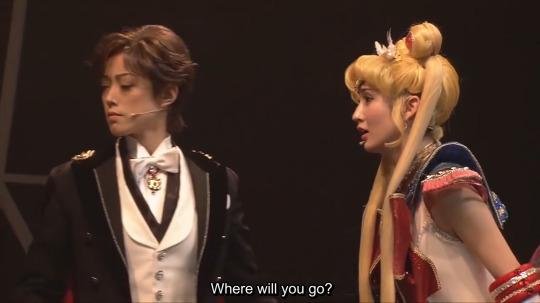


the Outers are the funniest dramatic bitches out there because they're always 100% on the same page with everything immediately, no matter how weird or unexpected. like there is no question or hesitation from any of them in whether they're gonna steal baby Hotaru and run off with her and raise her as her lesbian throuple parents, its as if they had all discussed this as a possible outcome already and its just all going according to plan
but also they will be 100% on their same page with their actions and have also reached the character growth that makes them accept they are on the same team as the Inners and they need to work together rather than sacrifice themselves needless.
But also they are NOT giving Usagi their new address
#we're keeping our location vague as possible princess we love you tho#also if Chibiusa wants to come over she can but we'll pick her up and drop her off#sera myu#sailor uranus#sailor neptune#sailor pluto#sailor saturn#sailor moon#haruka tenou#michiru kaioh#setsuna meioh#hotaru tomoe#usagi tsukino#un nouveau voyage
398 notes
·
View notes
Text

#movies#polls#a trip to the moon#trip to the moon#le voyage dans la lune#georges méliès#georges melies#1900s movies#old hollywood#bluette bernon#requested#have you seen this movie poll
197 notes
·
View notes
Text


Liès, The Sun, based on the sun that swallows the train in The Impossible Voyage! See The Moon here.
#( don't worry i didn't do all this extremely quickly i was half done when i mentioned it lol )#object heads#méi & liès#the sun and the moon#original character#oc#character design#fanart#silent films#georges melies#The Impossible Voyage#vintage movies#steampunk
411 notes
·
View notes
